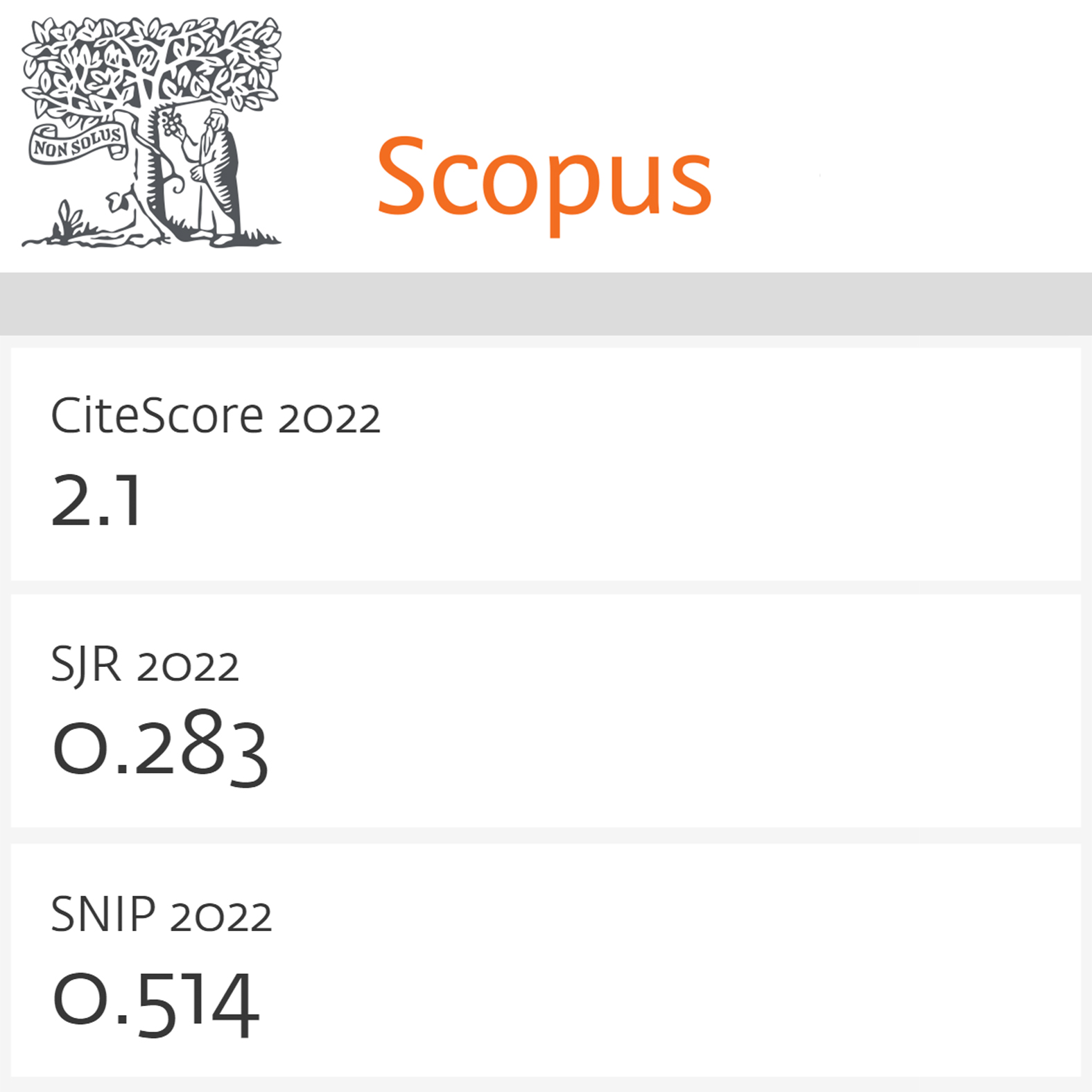Analysis of the formation of filament winding in terms of force interactions between threads
DOI:
https://doi.org/10.15587/1729-4061.2017.118961Keywords:
filament winding, chord, thread feeder, defects in winding, point of attack.Abstract
We investigated a problem of filament winding formation in terms of force interactions between threads. It was established that at certain ratios between the frequency of bobbin rotation and the frequency of thread feeder motion the threads are laid on the same place. This results in the formation of the so-called filament winding. In this case, in an extreme case, a turn of the thread is laid exactly on the place of the preceding one. This phenomenon, however, occurs only if the thread is considered ideal, that is, it has no thickness. It is shown that due to sufficient complexity of actual processes a thread cannot be placed exactly on the place of the one laid earlier, which results in that it flies off it. In this case, the turn laid earlier acquires the role of a spreader, that is, it defines the place of laying a thread on the bale. This place can differ significantly from that set by the motion of a thread feeder, resulting in the formation of chords, which cause breaks of thread at subsequent unwinding of the bobbin.
It is proposed, in order to eliminate the specified defects of winding in the form of filaments and chords that accompany them, to reduce to the permissible minimum the distance from the eye of a thread feeder to the point of attack. We describe conditions under which a fly-off of the turn occurs, based on which it becomes possible to determine the number of turns, laid with a breach of the kinematic conditions, as one of the basic parameters of the process. The latter means that there is no need for the thread feeder to control it. It is shown that a given parameter depends on the inclination angle of the turn, and the application of the resulting analytical description of this relation does not present any practical difficulties because all actual values of its constituent magnitudes, except for thread twisting stiffness, are known when designing a winding mechanism.
It was established that in addition to the proposed design solution it is necessary to maintain the tension not less than 20 sN for the yarn 225´2 tex. In the case of other linear densities, this parameter can be calculated based on the obtained analytical dependences for a thread inclination angle and duration of torsional oscillations of a homogeneous rod suspended in the middle. Such results form the basis of requirements to the design of a winding mechanism, which are aimed at reducing the number of uncontrollably placed turns.
References
- Singh, M. K. (2014). Yarn winding for warp and weft. Industrial Practices in Weaving Preparatory, 1–90. Available at: https://www.sciencedirect.com/science/article/pii/B9789380308296500013
- Koranne, M. (2013). Winding package parameters. Fundamentals of Yarn Winding, 66–99. doi: 10.1533/9781782420729.66
- Koranne, M. (2013). Winding package faults and remedies. Fundamentals of Yarn Winding, 174–183. doi: 10.1533/9781782420729.183
- Tausif, M., Cassidy, T., Butcher, I. (2018). Yarn and thread manufacturing methods for high-performance apparel. High-Performance Apparel, 33–73. doi: 10.1016/b978-0-08-100904-8.00003-1
- Gandhi, K. L. (2012). Yarn preparation for weaving: winding. Woven Textiles, 35–61. doi: 10.1533/9780857095589.1.35
- Singh, J. P., Verma, S. (2017). Winding yarn for terry fabrics. Woven Terry Fabrics, 39–53. doi: 10.1016/b978-0-08-100686-3.00005-0
- Hultman, E., Leijon, M. (2014). A cable feeder tool for robotized cable winding. Robotics and Computer-Integrated Manufacturing, 30 (6), 577–588. doi: 10.1016/j.rcim.2014.04.003
- Sharon, A., Lin, S. (2001). Development of an automated fiber optic winding machine for gyroscope production. Robotics and Computer-Integrated Manufacturing, 17 (3), 223–231. doi: 10.1016/s0736-5845(00)00030-2
- Proshkov, A. F. (1986). Mekhanizmy raskladki niti. Moscow: Legprombytizdat, 246.
- Ostrovskiy, A. A. (1969). Kriterii dlya opredeleniya vida namotki. Tekstil'naya promyshlennost', 8, 39–40.
- Zaytsev, V. P., Panin, I. N. (1981). Opredelenie udel'noy plotnosti namotki nitey na tsilindricheskuyu bobinu. Izvestiya VUZov. Tekhnologiya tekstil'noy promyshlennosti, 6, 44–48.
- Zaytsev, V. P., Panin, I. N., Minaev, A. G. (1984). Eksperimental'noe issledovanie izmeneniya udel'noy plotnosti namotki pryazhi na konicheskih bobinah somknutoy namotki. Izvestiya VUZov. Tekhnologiya tekstil'noy promyshlennosti, 4, 42–45.
- Bandova, M., Pavlov, P. et. al. (1981). V'eruhu prichinate za raznotenie pri bagrene na viskozna koprina v mas. Himiya i industriya (NRB), 8, 353–354.
- Potapova, L. V. (1971). Odna iz prichin poperechnoy polosatosti kapronovyh tkaney. Tekstil'naya promyshlennost', 3, 34–35.
- Zaytsev, V. G., Panin, I. N. (1982). Issledovanie protsessa formirovaniya bobin sotovoy namotki na mashine «Bandomat». Izvestiya VUZov. Tekhnologiya tekstil'noy promyshlennosti, 3.
- Klimov, V. A., Mazin, L. S. (1983). O vozmozhnosti dinamicheskogo gasheniya kolebaniy podvesa friktsionnyh namotochnyh mekhanizmov. Issledovanie i proektirovanie oborudovaniya dlya proizvodstva himicheskih volokon. Moscow, 13–19.
- Fedorenko, N. A., Krutikova, M. M., Agafanova, N. G. (1980). Utochnenie parametrov protsessa perematyvaniya osnovnoy hlopchatobumazhnoy pryazhi pnevmomekhanicheskih protsessov v promyshlennosti lubyanyh volokon. Moscow, 29–37.
- Rudovskiy, P. N. (1995). Analiz struktury namotki pri friktsionnom namatyvaniya. Izvestiya VUZov. Tekhnologiya tekstil'noy promyshlennosti, 4, 56–59.
- Lünenschloβ, J., Wiesel, W. (1988). Das Spulenauf-baufverhalten in Abhängigkeit modifizierter Spulenbedin-gungen. Chemiefasern Textilindustrie, 38 (10), 904–907.
- Rudovskiy, P. N. (1995). Vliyanie vzaimodeystviy vitkov na protsess raskladki. Izvestiya VUZov. Tekhnologiya tekstil'noy promyshlennosti, 5.
- Rudovskiy, P. N. (1996). Svyaz' mezhdu strukturoy namotki, sletami vitkov i obryvnost'yu pri perematyvanii. Izvestiya VUZov. Tekhnologiya tekstil'noy promyshlennosti, 6.
- Minakov, A. P. (1944). Osnovy teorii namatyvaniya i smatyvaniya niti. Tekstil'naya promyshlennost', 10, 11–12.
- Nikitin, N. N. (1990). Kurs teoreticheskoy mekhaniki. Moscow: Vysshaya shkola, 607.
- Nuriev, M. N., Rudovskiy, P. N. (1994). Analiz formirovaniya zhgutovoy namotki s tochki reniya silovyh vzaimodeystviy nitey. Uzbekskiy zhurnal "Problemy mekhaniki", 2, 29–31.
- Nuriev, M. N., Rudovskiy, P. N. (1994). Povedenie niti na poverhnosti pakovki pri formirovanii zhgutovyh struktur. Uzbekskiy zhurnal "Problemy mekhaniki", 3-4, 24–26.
- Panovko, N. G. (1971). Vvedenie v teoriyu – mekhanicheskih kolebaniy. Moscow: Nauka, 236.
Downloads
Published
How to Cite
Issue
Section
License
Copyright (c) 2017 Mahamadali Nuriyev, Fazil Veliev, Ilham Mammad Seydaliyev, Kamala Dadashova, Ganira Zargar Jabbarova, Ilhame Allahverdiyeva

This work is licensed under a Creative Commons Attribution 4.0 International License.
The consolidation and conditions for the transfer of copyright (identification of authorship) is carried out in the License Agreement. In particular, the authors reserve the right to the authorship of their manuscript and transfer the first publication of this work to the journal under the terms of the Creative Commons CC BY license. At the same time, they have the right to conclude on their own additional agreements concerning the non-exclusive distribution of the work in the form in which it was published by this journal, but provided that the link to the first publication of the article in this journal is preserved.
A license agreement is a document in which the author warrants that he/she owns all copyright for the work (manuscript, article, etc.).
The authors, signing the License Agreement with TECHNOLOGY CENTER PC, have all rights to the further use of their work, provided that they link to our edition in which the work was published.
According to the terms of the License Agreement, the Publisher TECHNOLOGY CENTER PC does not take away your copyrights and receives permission from the authors to use and dissemination of the publication through the world's scientific resources (own electronic resources, scientometric databases, repositories, libraries, etc.).
In the absence of a signed License Agreement or in the absence of this agreement of identifiers allowing to identify the identity of the author, the editors have no right to work with the manuscript.
It is important to remember that there is another type of agreement between authors and publishers – when copyright is transferred from the authors to the publisher. In this case, the authors lose ownership of their work and may not use it in any way.









